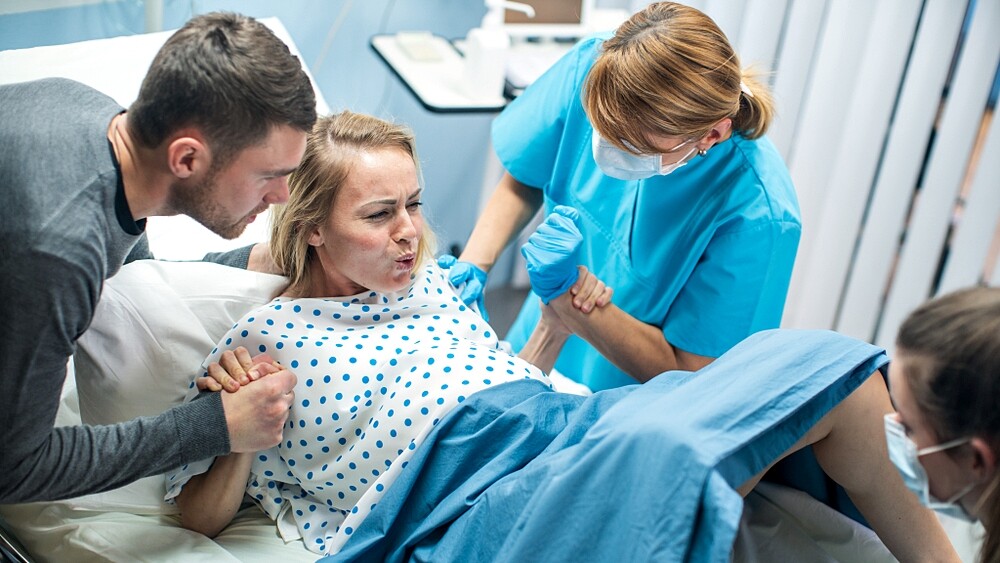Some women suffer perineal tears during childbirth. How this happens, what supports the healing process and how to prevent perineal tears, you can read here.
The perineal tear is one of the most common birth injuries. If the birth proceeds very quickly or if the baby is very large, the perineum can rupture and must be stitched after birth. In order for this scar to heal as quickly and without complications as possible, you can support the tissue. And because in this case prevention is just as good as aftercare, you should also prepare the perineum for the birth from the 33rd week of pregnancy.
What and where is the perineum anyway?
The perineum is an extremely elastic tissue between the vulva and the anus. As part of our pelvic floor muscles, the perineum in turn secures the position of the abdominal and pelvic organs and supports the closure of the anus and urethra. Before a pregnancy many women do not know exactly what the perineum is and where it is located. Only when it is injured during childbirth can it be felt and noticed. This is when a torn perineum or an episiotomy heals and the scar hurts.
Perineal Tear: Causes and risk factors
First the good news: Dam cracks have become less frequent in recent years. But although the tissue is extremely flexible, it can still reach its limits during birth. Risk factors for perineal tears are the most important:
- a very big kid
- an awkward stage of pregnancy
- a very fast birth with a short opening period
- insufficient perineal protection by the midwife or doctor
- the use of mechanical aids (pliers or vacuum binding)
Especially when the baby’s head or shoulder is born, the perineum can tear in the direction of the anus. It is important that the injury is then well sutured and cared for in order to prevent later problems such as a lowering of the pelvic floor or incontinence. Many expectant mothers are especially afraid that the perineum might tear during birth and this causes severe pain. However, it is not possible to predict whether a perineal tear will actually occur.
Degrees of severity of a perineal tear
Depending on how badly the perineum was injured, the perineal tear is divided into different degrees of severity:
- First-degree perineal tear: The skin on the perineum is only superficially torn. The musculature is not affected.
- Perineal tear in 2nd degree: The injury affects the skin and muscles, the sphincter muscle is still intact.
- Perineal tear in 3rd degree: The sphincter muscle is partially or completely torn.
- Perineal tear, 4th degree: The sphincter and intestinal mucosa are affected.
You can do that to help the perineal tear heal quickly
1. Cooling
Especially shortly after birth the scar is often swollen. Here, cooling compresses have a decongestant and pain-relieving effect.
That’s how it works: Just drip some water or vegetable oil on a clean sanitary napkin, let it freeze and place it on the scar. Alternatively, you can also fill a condom with water and put it in the freezer. Important: Wrap both the condom and the sanitary towel with cloth to prevent frostbite.
2. Hip baths
Tanning baths or a herbal sitz bath, for example with chamomile, yarrow and marigold, additionally support the healing process as they have a disinfecting effect and keep the scar soft.
This is how it works: Use once a day. But be careful: let the water cool down to body temperature.
3. Flushing
Intimate rinses with calendula or chamomile, for example, have a similar effect to sitz baths.
That’s how it works: Simply run the solution from above between your legs while you are sitting on the toilet.
4. Creams
Ointments promote blood circulation in the tissue and support the skin in the healing process.
That’s how it works: Once the stitches have dissolved, you can cream the scar once or twice a day with almond oil or a special scar cream.
Prevent perineal tear and prepare the tissue
- A perineal massage prepares the tissue for birth
- A balanced diet during pregnancy also affects the durability of your skin
- Regular pelvic floor training
- Perineal gymnastics provides a stretching effect
- With the Anti-Intervinal Cordist-Trainer also known as Epi-No you can carefully pre-stretch the tissue
- Steam bath with hay flower blossoms and drinking raspberry leaf tea makes the tissue softer
- Avoid birth in a supine position, a squatting or kneeling birth position or a water birth are much gentler on the perineum

